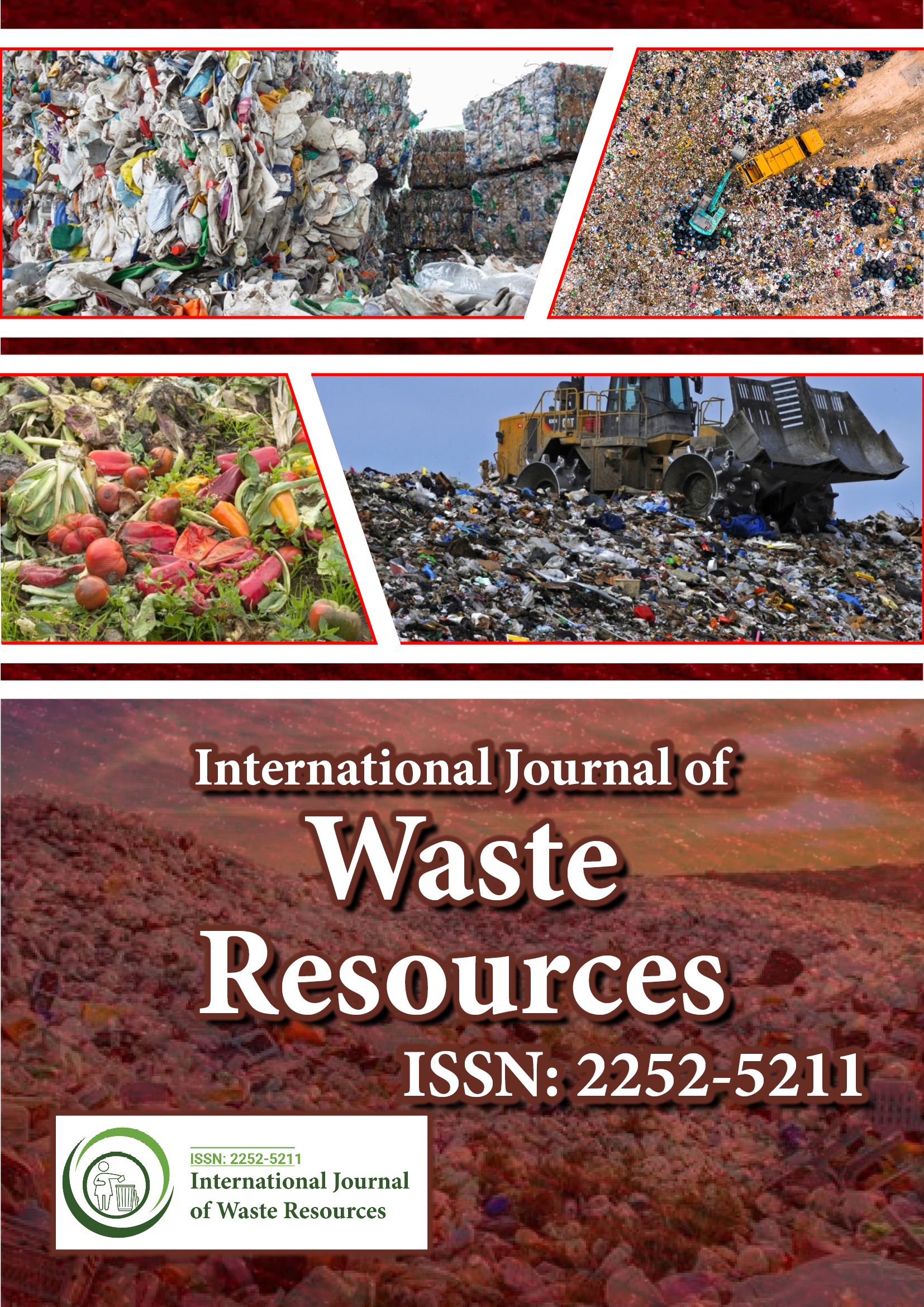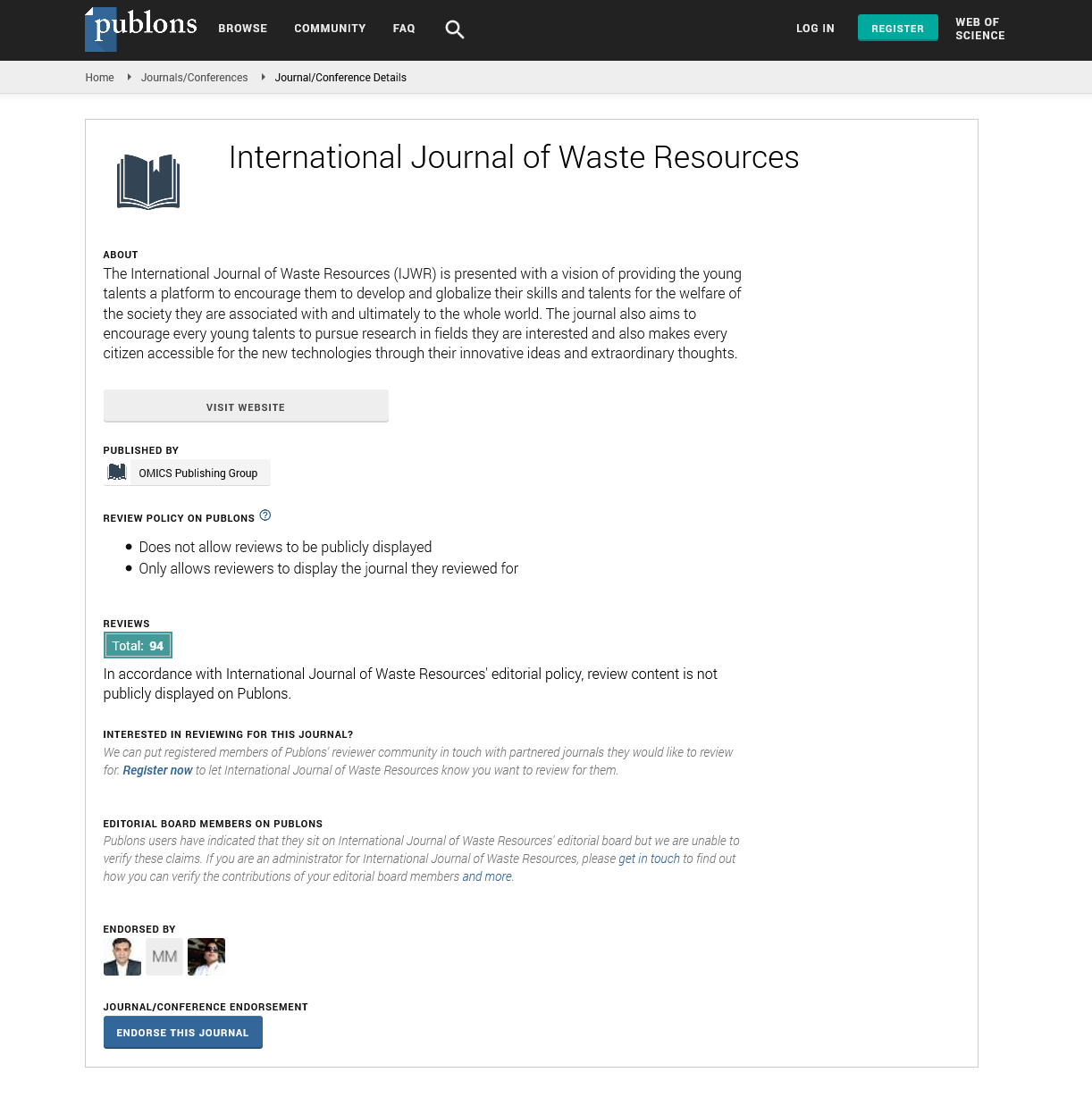Indexed In
- Open J Gate
- The Global Impact Factor (GIF)
- Open Archive Initiative
- VieSearch
- International Society of Universal Research in Sciences
- China National Knowledge Infrastructure (CNKI)
- CiteFactor
- Scimago
- Ulrich's Periodicals Directory
- Electronic Journals Library
- RefSeek
- Directory of Research Journal Indexing (DRJI)
- Hamdard University
- EBSCO A-Z
- Publons
- Google Scholar
Useful Links
Share This Page
Journal Flyer

Open Access Journals
- Agri and Aquaculture
- Biochemistry
- Bioinformatics & Systems Biology
- Business & Management
- Chemistry
- Clinical Sciences
- Engineering
- Food & Nutrition
- General Science
- Genetics & Molecular Biology
- Immunology & Microbiology
- Medical Sciences
- Neuroscience & Psychology
- Nursing & Health Care
- Pharmaceutical Sciences
Commentary - (2022) Volume 12, Issue 2
Reduction of Waste Clothes by Recycling
Wang Xu*Received: 04-Feb-2022, Manuscript No. IJWR-22-15896; Editor assigned: 07-Feb-2022, Pre QC No. IJWR-22-15896(PQ); Reviewed: 21-Feb-2022, QC No. IJWR-22-15896; Revised: 25-Apr-2022, Manuscript No. IJWR-22-15896(R); Published: 04-Mar-2022, DOI: 10.35248/2252-5211.22.12.454
Description
Textile recycling is a process by which old clothing materials and other unused clothes are collected for reuse or for recovery. It's the raw material for the textile recycling industry. The basic steps in the textile recycling process involves in donation, collection, sorting and processing of textiles, and then subsequent transport to end users of used garments, rags or other recovered materials.
The base for the growing textile recycling industry is, of course, the textile industry itself. The textile industry has evolved into a nearly$ 1 trillion industry encyclopedically, comprising clothing, as well as furnishings and mattress material, linens, draperies, cleaning materials, leisure equipment, and numerous other particulars.
The urgency to reclaim textiles
The significance of recovering textiles is increasingly being recognized. An estimated 100 billion garments are produced annually; worldwide. The recycling rate for textiles deduced from apparel and footwear was 13.0, while the recovery for sheets and pillowcases was 15.8 for the same time. Similarly, textile recycling is a significant challenge to be addressed as we strive to move closer to a zero tip society.
Formerly in landfills, natural fibers can take a few weeks to a many times to decompose. They may release methane and CO2 gas into the atmosphere. Also, synthetic fabrics are designed not to decompose. In the landfill, they may release poisonous substances into groundwater and surrounding soil.
Textile recycling offers the following environmental benefits:
• Decreases landfill space conditions, bearing in mind that synthetic fiber products don't decompose and that natural fibers may release greenhouse gasses;
• Avoided use of virgin fibers;
• Reduced consumption of energy and water;
• Pollution avoidance;
• Lessened demand for colorings.
Sources of textiles for recycling
Textiles for recycling are generated from two primary sources. These sources include:
Post-consumer including garments, vehicle upholstery, household particulars and others;
Pre-consumer, including scrap created as a by-product from yarn and fabric manufacture, as well as the post-industrial scrap textiles from other industries.
Wearable and reused textiles
In the European Union, about 50 of collected textiles are reclaimed and about 50 are reused. Roughly 35 of donated clothes are turned into industrial rags. Utmost of the reused apparel is exported to other countries. Oxam, a British charitable organization, estimates 70% of their apparel donations end up in Africa. The issue of transporting used apparel to Africa has generated some degree of controversy as to the benefits of similar initiatives, where it can have an adverse impact on local cloth industries, native dress, and local waste generation.
The recycling process
For textiles to be recycled there are abecedarian differences between natural and synthetic fibers. For natural fabrics:
The incoming un-wearable material is sorted by type of material and color. Re-coloring is not needed if textile is color sorted. The color sorting means dying is not necessary, saving energy and avoiding contaminants;
• Fabrics are also pulled into fibers or tattered, sometimes introducing other fibers into the yarn. Materials are tattered or pulled into fibers. Depending on the end use of the yarn, other fibers may be incorporated;
• The yarn is also cleaned and mixed through a carding process;
• Also the yarn is re-spun and ready for subsequent use in weaving or knitting;
• Some fibers aren't spun into yards, still. Some are compressed for textile filling such as in mattresses.
In the case of polyester based fabrics, garments are ripped and then granulated for processing into polyester chips. These are subsequently melted and used to produce new fibers for use in new polyester fabrics.
Beyond recycling, protect sustainably
As society becomes more familiar with the hazards associated with transporting old fabrics to the landfill, and as new recycling technologies develop, it can be anticipated that the cloth recycling assiduity will continue to grow. Similarly at the same time, waiting for similar trends as slow fashion to draw the attention to the interplay of apparel and sustainability. The fast fashion industry generates considerable pollution and a sizeable negative impact on climate change. Consumers can help affect change by choosing clothing brands that last longer and which demonstrate a commitment to reducing their climate change impact.
Citation: Xu W (2022) Reduction of Waste Clothes by Recycling. Int J Waste Resour. 12:454.
Copyright: © 2022 Xu W. This is an open access article distributed under the terms of the Creative Commons Attribution License, which permits unrestricted use, distribution, and reproduction in any medium, provided the original author and source are credited.

